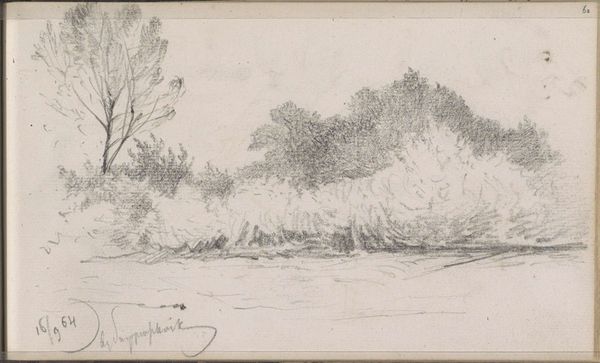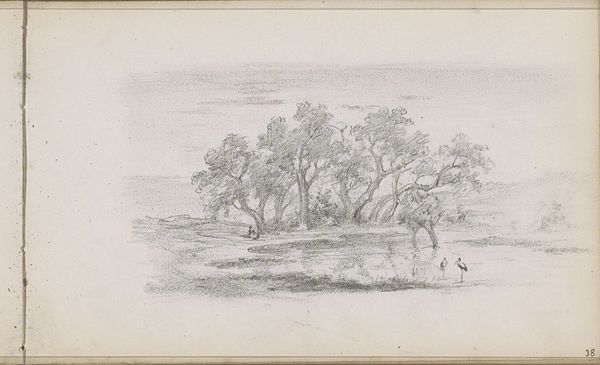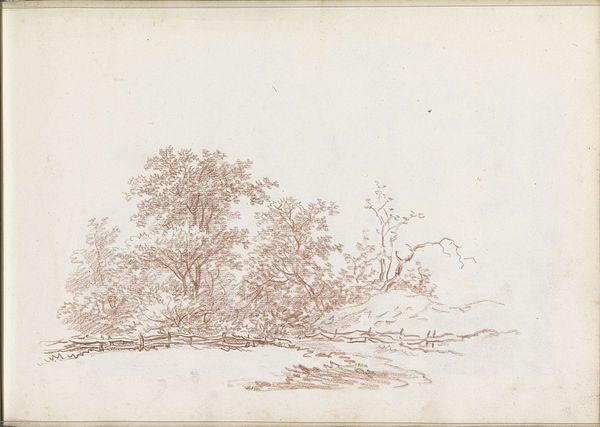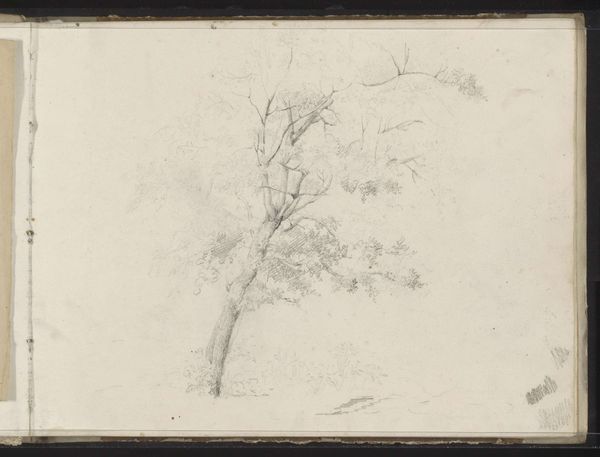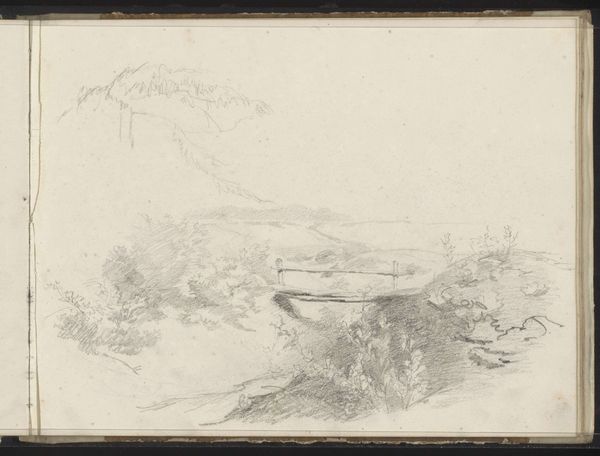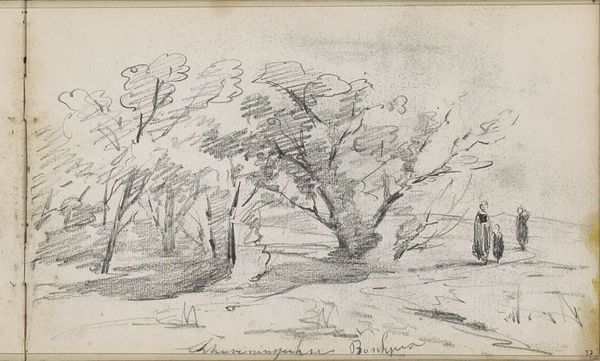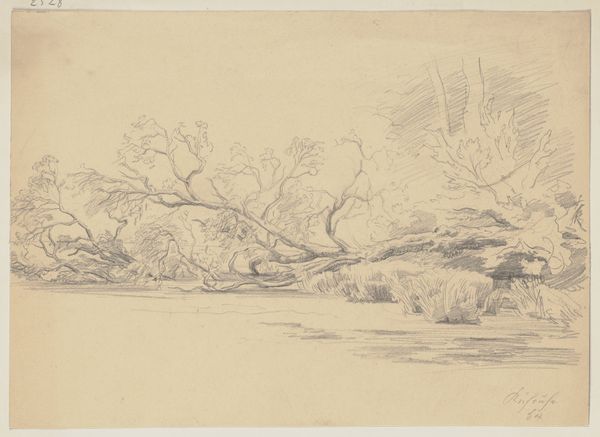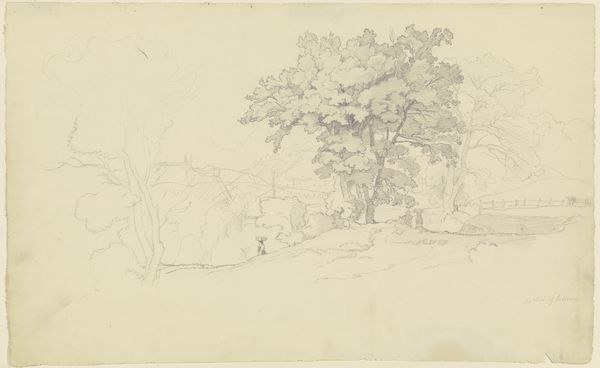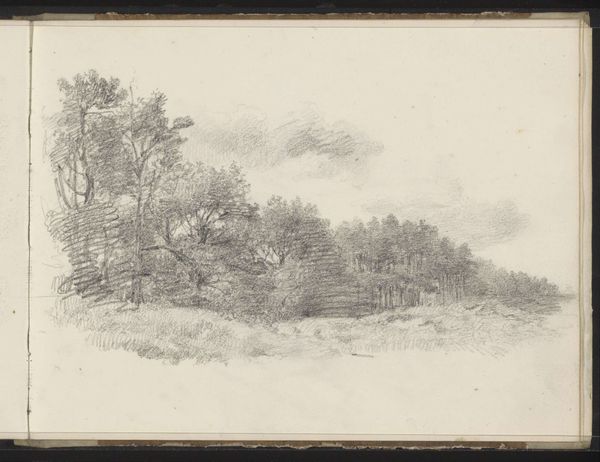
drawing, paper, pencil
#
drawing
#
dutch-golden-age
#
impressionism
#
landscape
#
paper
#
pencil
#
watercolor
Dimensions: height 184 mm, width 282 mm
Copyright: Rijks Museum: Open Domain
Editor: This is Willem Cornelis Rip’s “Path in a Landscape near Sonsbeek,” made with pencil on paper sometime between 1874 and 1878. It’s so delicate. What strikes me most is its simplicity. What can you tell me about it? Curator: Well, looking at this, I'm immediately drawn to the materials and the process of its making. A pencil drawing on paper isn’t inherently "high art," is it? But here, it’s elevated. We should consider the context: what paper was Rip using? Was it mass-produced or handmade? That speaks volumes about his artistic intentions. Editor: That’s true! It's interesting to think about how something as simple as the paper’s origin could change our view. Curator: Exactly! And consider the landscape itself. Sonsbeek would have been undergoing changes during this period. Who had access to this path? How was the land being used? These factors shaped Rip’s experience and therefore the drawing itself. What social and economic structures are at play? Editor: So, you’re saying the art isn't just the finished product, but also a record of the resources, the labor, and the social situation? Curator: Precisely. The very act of drawing becomes a means of understanding the landscape, its resources, and the power dynamics embedded within it. Were these materials easily acquired or scarce? It adds layers to the work. Editor: I never really considered art this way. It seems to open a much broader understanding. Curator: It does! By understanding the process and materials, we understand the artist's place within a specific system. Hopefully that encourages an appreciation that isn’t based simply on aesthetics.
Comments
No comments
Be the first to comment and join the conversation on the ultimate creative platform.

